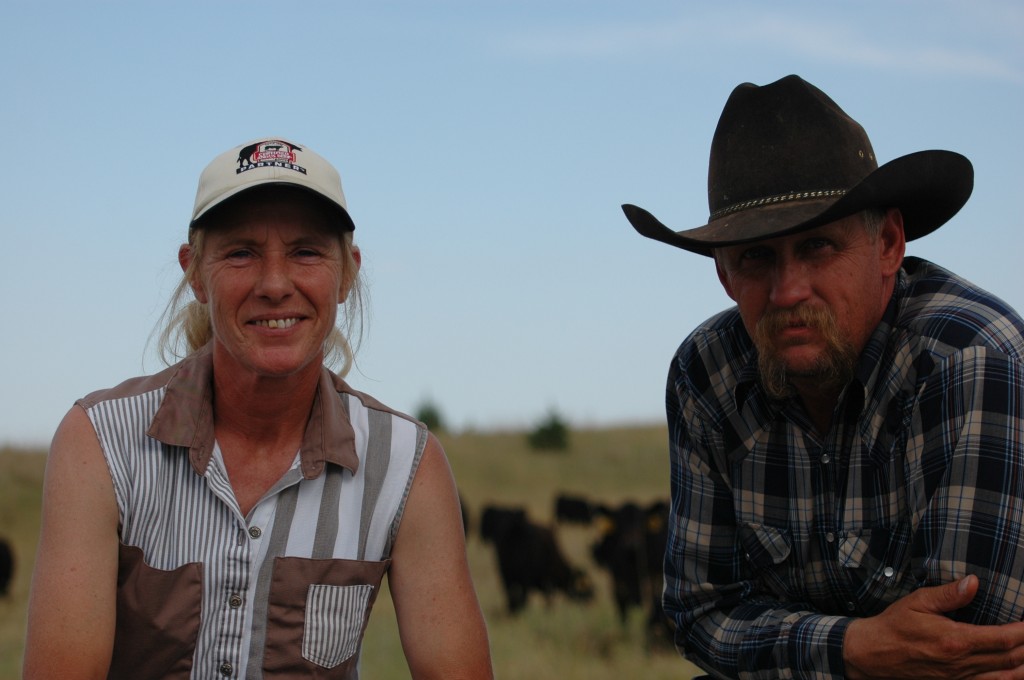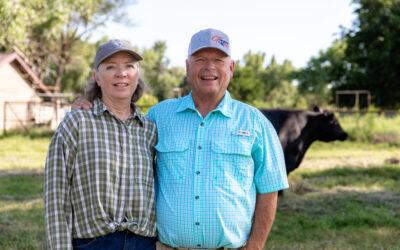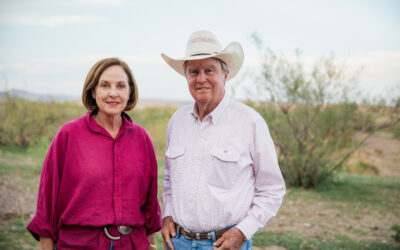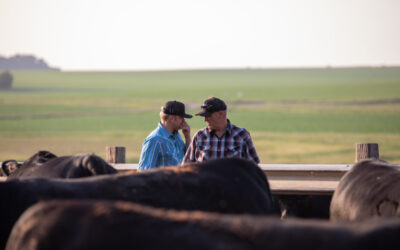
Headed the same way
Sorry George. It was just too good not to.
Meet George and Lorretta Epp, the righthand man (and woman) at Guggenmos River Ranch.
When I planned to visit the family ranching and feeding operation in the Nebraska Sandhills, Larry Guggenmos wanted to be sure the couple could make it to the interivew, too.
No wonder. They all sat around the kitchen table finishing each other’s sentances when talking cowherd goals.
“I never understood somebody who says, ‘I don’t care about the meat.’,” George said. Shaking her head, Loretta added, “Then where are your cattle going to end up?”
I don’t think their paycheck is directly tied to some grid payment or cattle performance goal. That’s when it became clear to me that having “good help” is about a whole lot more than finding hard workers or folks who pay attention to detail.

It’s about a shared vision.
The cowherd records–the pedigrees, the history, special notations–all 400-some of them are displayed on the office wall. But there’s hardly any need. George and Loretta know those cows like they’re their kids.
“George can remember their mothers and their grandmothers. Cows and pedigrees are his thing,” Larry says. Today Larry spends most of his time on the feeding end of the cattle equation. As I told you Monday, that combination of genetics and managment is producing loads that reach nearly 80% CAB and CAB Prime.
I heard, “We’re a good team,” two or three times during my visit.
We know that’s a good feeling. We’re glad folks out in the country share our passion for the end product, too.
May your bottom line be filled with black ink,
~Miranda
You may also like
Helping Hands, Helping Herds
“When I die, I want to come back as one of your cows,” murmurs a friend to Steve Zybach. Full to the brim from an alfalfa ration every day, bountiful fields of lovegrass stretched out across the Texas Panhandle—and owners who leave no ounce of cattle care up for question. The Zybachs’ motivation for this level of dedication to their Angus cattle is simply love.
An Unforgiving Land
What makes a ranch sustainable? To Jon, it’s simple: the same family, ranching on the same land, for the last 140 years. The Means family never could have done that without sustainability. Responsible usage of water, caring for the land and its wildlife, and destocking their herd while the land recovers from drought.
System Over Scale
For Dallas Knobloch, it’s not about being the biggest feedyard—it’s about building a high-quality system that works. Today, with Tory’s wife Sadie and daughter Ivy, the Knobloch family owns and operates 4K Cattle. They feed 2,500 cattle at eight locations within 10 miles of home, manage 1,000 acres of crops and run a 125-head cow herd, all near Hills, Minn.




